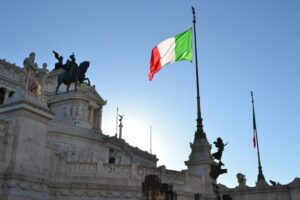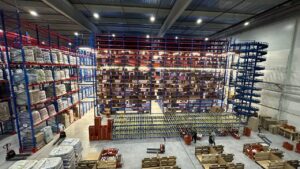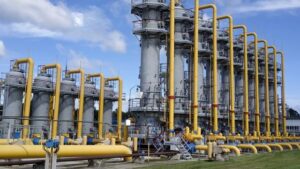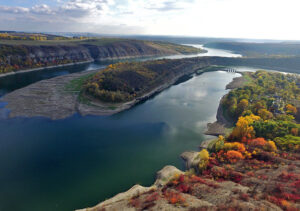Ukraine’s public debt to GDP ratio from 2009 to 2023 (UAH mln)

Open4Business.com.ua

Italy, as one of the leading economies in the European Union, continues to recover from the pandemic and crisis of recent years. However, the labor market is facing many challenges, such as a demographic decline, an aging population, and pressure from migration flows. In the first half of 2024, the Italian labor market showed mixed results: improvement in some sectors and stagnation in others.
The Experts Club Information and Analytical Center analyzed the main trends in the Italian economy, the situation on the labor market and the situation of Ukrainian citizens staying in Italy.
The minimum wage in Italy is still not set at the national level. The issue of introducing a minimum wage has been discussed in the country for a long time, but at the moment, the terms of remuneration are regulated by collective agreements concluded by trade unions and employers in various industries. On average, the minimum wage under the agreements is about 8-9 euros per hour, which, if you are fully employed, corresponds to about 1,300-1,500 euros per month.
According to Experts Club, salaries in Italy vary by region, qualification, and industry. Let’s take a look at the average salaries in the main sectors of the economy:
Employment trends:
As of the beginning of 2024, there are about 5 million migrants in Italy, which is almost 9% of the total population. The main nationalities among migrants:
At the beginning of 2024, the number of Ukrainian citizens in Italy increased significantly due to the war in Ukraine. As of February 2024, there are more than 254,000 Ukrainians in Italy who are officially registered with temporary protection. However, the actual number of Ukrainians in the country may exceed 1 million, given the constant flow of refugees and migrants, as well as those who have not officially registered.
These migrants are mainly employed in agriculture, construction, and services related to elderly and childcare. Ukrainians, for example, after the outbreak of war in 2022, made up a significant share of home care workers.
According to the Experts Club information and analytical center, one of the main challenges for Italy is the integration of migrants into the economy. Some sectors are facing a shortage of skilled workers, while others are facing the problem of excess labor, especially among young people. In the coming years, the government will continue to implement programs aimed at supporting the integration and training of young professionals, as well as reducing bureaucratic barriers to job creation.
Thus, the labor market in Italy in the first half of 2024 shows both positive and negative trends. The economy needs skilled workers, especially in the technology and healthcare sectors, while the service sector continues to depend on migrants, who play an important role in solving the country’s demographic problems.

Ukrainian pet products supplier Suziria Group has developed a three-year business development strategy, which envisages the construction of a wet pet food production facility in the city of Kalush (Ivano-Frankivsk region) and has attracted more than $6 million in external financing, co-owner and head of the supervisory board of Suziria Group, founder of a chain of pet stores Polina Kosharnaya said.
“We also have a 3-year business development strategy that runs until 2027. It presents business modeling. It (strategy – IF-U) describes both the existing business and the development of new production. (…) This is the first project that is being built with large external financing. The project itself, the construction, has already started,” she said at the ‘CEO Summit’ that Forbes Ukraina held in Kiev on Friday.
Kosharnaya added that the group has won a $2 million USAID grant, of which $1 million has already been spent for equipment fabrication. In addition, Suziria Group intends to raise about $4 million more in external loans in 2025, will receive another $1 million grant, and will also use its own funds.
As reported, the state-owned Oshchadbank (Kyiv) signed an investment loan agreement with Suziria Group for the amount of over $4.5 mln. The bank said that currently Suziria Group produces wet pet food at partner facilities in the EU countries. The development of its own production will help the company to gradually abandon imports of this category of products and expand the geography of sales. In three years Suziria plans to start its own export of Ukrainian-made wet pet food to the European market.
According to Oschadbank, Suziria Group plans to double its production volumes in the next five years.
Suziria Group is a Ukrainian family group of companies, which has been developing the market of pet products for more than 30 years. It includes Suziria Brands, Suziria Distribution, MasterZoo chain of pet stores, which has 190 stores, as well as a network of grooming salons. The company operates throughout Ukraine and abroad, exports its own goods under the brands Savory, Half&Half, Special One, Pet Fashion, Buddy Boo, Priroda, Puramur.

The Ministry of Economy of Taiwan has announced a complete cessation of machine tool supplies to Russia due to stricter export control rules. These measures were taken after a series of investigations into such supplies were published in the media.
The Ministry of Economic Affairs of Taiwan on Friday, November 1, announced
about the complete cessation of supplies of machine tools that can be used in military enterprises to Russia. Export control rules were tightened after a series of investigations into such supplies were published in the media.
In particular, the fine for the initial violation of the sanctions imposed on Russia and Belarus was significantly increased to NT$1 million (approximately USD 31,100). In addition, the Ministry of Economy reported that it is conducting “active explanatory work” with manufacturers, urging them to comply with the law and control the final flow of products.
According to the ministry, this has already yielded results, and the volume of machine tool exports from Taiwan to Russia has “dropped to zero.”
In January of this year, the Russian edition of The Insider and the Taiwanese edition of The Reporter published a joint investigation,
which stated that Taiwan, despite the pro-Ukrainian position of the authorities, had become the main supplier of metalworking machines for the Russian military-industrial complex. The publication pointed out that these exports go through third countries such as Turkey. Already in February, Taipei imposed sanctions on several Russian companies that were mentioned in the article.)
In July, a new investigation was published by
The Insider reported that the Taiwanese company Giant Force intends to circumvent the restrictions by supplying Russia with an indispensable device for testing the heat-resistant coating of missile bodies – a “salt fog chamber”. According to the newspaper, this scheme involved a Chinese plant of a Taiwanese company, a Malaysian transportation company, and a Kyrgyz bank. As a result, the deliveries were disrupted due to the vigilance of banks, in particular Chinese banks, which feared sanctions for exporting dual-use goods, The Insider writes.
The supply of Taiwanese machine tools to Russia was also mentioned in reports by the British Royal United Kingdom’s Joint Institute for Defense Studies and the Open Source Center, a US government center that analyzes open-source information for US intelligence agencies.
In 2023, Russia bypassed sanctions and received more than 300 automated machines from German manufacturers, according to an investigation by the German television company SWR, which analyzed customs documents, as well as photos and videos. According to the report, German CNC machines are actively used by companies that supply the Russian army with engines and aircraft parts, including KAMAZ, NIR, and Industrial Solutions.
As the journalists found out, the Russian military-industrial complex uses machines from more than 30 German manufacturers, including Heller. According to SWR, in two-thirds of cases, equipment from Germany is delivered to Russia through intermediaries in Turkey.
German companies told SWR that they comply with sanctions against Moscow and do not know how their machines ended up in Russia. “Sanctions circumvention is an extremely lucrative business. As a rule, there is a person in a third country who will be well paid for this,” explained sanctions expert Benjamin Hilgenstock of the Kyiv School of Economics. He believes that German companies do not always know where their products are shipped to, but they “could definitely find out if they tried.” The expert called on the German government to tighten export regulations.
Source: https://www.dw.com/ru/tajvan-zaavil-o-polnom-prekrasenii-postavok-stankov-v-rossiu/a-70672790

On November 1, 2024, Ukraine started the season of natural gas withdrawal from its underground gas storage facilities (UGS), according to the data of the Association of European Underground Gas Storage Operators (GSE). While on October 30 and 31 a small filling of storage facilities was recorded, on November 1 the volume of their filling decreased by 0.05%.
On October 31, the head of Naftohaz, Oleksiy Chernyshov, stated on his Facebook page that the heating season was actively starting in Ukrainian cities.
He recalled that Ukraine used about 6.7 billion cubic meters of gas from its subway gas reservoirs during the 2023/2024 heating season, and expects the same figures for the 2024/2025 season.
As reported, Ukraine entered November 2023 with 16 billion cubic meters of gas stored in UGS facilities. In general, during the heating season 2023/24, 8.5 billion cubic meters of natural gas was withdrawn from storage facilities, of which Ukraine used 6.7 billion cubic meters. The gas withdrawal season lasted a total of 145 days.
Ukraine planned to enter the heating season of 2024/25 with gas reserves in UGS at least 13 billion cubic meters. At the same time, the low activity of gas injection by non-residents forced Naftohaz to buy gas and store it in Ukraine’s UGS facilities in the “customs warehouse” (CU) mode,
Chernyshov noted in his commentary to Energoreforma in early October that as of November 1, the company’s purchase of gas in the TC mode, which is carried out as a reserve at the expense of the EBRD loan, will amount to about 0.5-0.6 billion cubic meters.
According to former Energy Minister Olga Buslavets, in general, the reserves in Ukraine’s UGS facilities as of November 1, 2024 amounted to 12.9 billion cubic meters.
natural gas withdrawal, UKRAINE, underground storage facilities

The Cabinet of Ministers of Ukraine has approved the first six-year management plans for eight river basins in Ukraine: Dnipro, Don, Dniester, Vistula, Southern Bug, Azov and Black Sea rivers, as well as Crimea until 2030, the Ministry of Environmental Protection and Natural Resources of Ukraine said on Friday.
“These are roadmaps on how to improve the quality of surface and groundwater in practice. They will help to assess the state of Ukrainian water resources, in particular, as a result of the impact of military operations, as well as to identify ways to achieve a “good” state of water,” said Svitlana Hrynchuk, Minister of Environmental Protection and Natural Resources of Ukraine.
It is noted that the next step should be the implementation of river basin management plans. “This is one of the key indicators in the Water Quality sector during the negotiation process on Ukraine’s accession to the EU,” the statement said.
The implementation of river basin management plans is aimed at addressing the following major water and environmental issues: surface water pollution by organic, nutrient and hazardous substances; hydromorphological changes; groundwater pollution and depletion; climate change; reducing the impact of infrastructure facilities on water conditions; pollution of water bodies by household waste; biological pollution (spread of invasive species); and the impact of military operations.
“River basin management plans will enable Ukraine to fulfill its European integration obligations and harmonize its water policy with the EU Water Framework Directive. In preparing them, Ukraine took advantage of the experience of Austria, Slovakia, Romania, Poland, Hungary, France and Estonia,” the agency said in a statement.